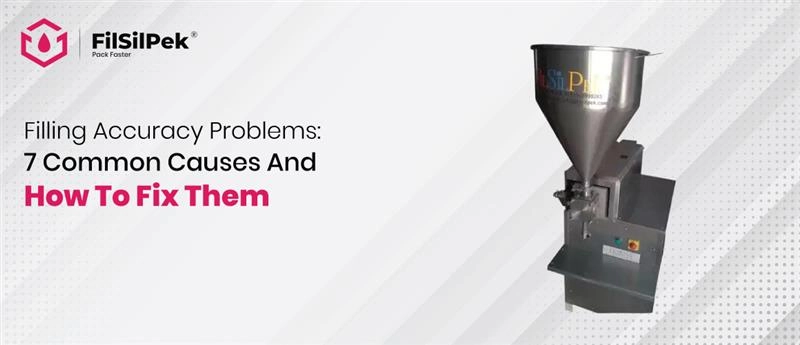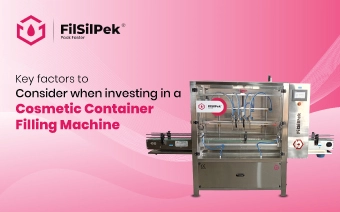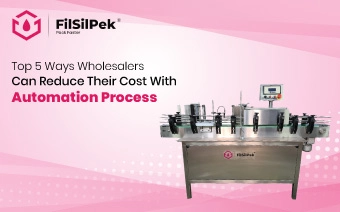Filling accuracy problems: 7 common causes and how to fix them
In every production unit where filling is at the heart of operations, accuracy decides more than just the quantity inside a container it defines quality, customer trust, and profit margins. A small difference in each fill might look harmless, but across thousands of units, it turns into a serious financial drain and brand reliability issue.
Whether it’s a liquid, semi-viscous, or viscous product, filling consistency determines how smooth your production’s run remains. When accuracy fails, the effects are widespread ranging from wastage and rework to delayed deliveries and compliance setbacks. These are not just mechanical issues but operational inefficiencies that need strategic attention.
This article explores why filling accuracy problems occur, the top causes behind them, and how modern systems and smarter processes can help prevent them.
The real cost of poor filling accuracy
Studies across the packaging and FMCG industries show that overfills typically account for 1–3% of total production losses. For high-value products such as lubricants, cosmetics, or pharmaceutical liquids, that margin easily translates into annual losses of several lakhs to crores. Even small operations filling 10,000 bottles daily at just 1 ml overfill lose nearly 3,650 litres per year enough to affect both profit margins and raw material planning.
From a quality perspective, ±1% fill variation is considered acceptable for most liquid products, but exceeding this limit disrupts packaging uniformity and leads to downstream problems like incorrect sealing or labeling. In automated lines, repeated inaccuracies also affect synchronization with capping and conveyor systems, leading to stoppages and reduced line efficiency.
Accurate filling isn’t only about saving product it’s about maintaining system harmony, operational predictability, and sustainable output.
Common causes of filling accuracy problems and how to fix them
Even the best-designed filling machines can face performance issues if the surrounding factors like temperature, product characteristics, or mechanical wear aren’t controlled. Below are the seven most frequent causes of filling deviations and their respective technical remedies.
1. Incorrect machine calibration
Filling machines rely heavily on proper calibration to dispense the right quantity every cycle. Over time, repeated use and production changes can cause slight drifts in calibration, affecting both overfills and underfills.
Fix: Establish a routine calibration schedule, especially when switching between different products, viscosities, or container types. Use certified measuring tools and trained operators to verify calibration. For better long-term control, consider machines with digital calibration systems or auto-adjust features that maintain consistent output even with frequent product changeovers.
2. Product viscosity variations
Viscosity changes caused by temperature shifts, ingredient ratios, or batch inconsistency can alter how the product flows into containers. For instance, thicker products like creams or sauces behave differently from liquids such as oils or beverages, directly impacting fill accuracy.
Fix: Maintain consistent product temperature throughout the filling process. Install viscosity monitoring sensors or pre-heating systems for thicker products. If multiple product types are processed, choose servo-driven or weigh metric filling machines that adapt flow control automatically to compensate for viscosity changes.
3. Air entrapment during filling
Trapped air bubbles inside the product or pipeline can cause underfills, inconsistent volumes, or foaming issues especially in liquid products like shampoos, detergents, or dairy beverages. Air pockets also interfere with volumetric or pneumatic measurement systems, leading to erratic fills.
Fix: Use de-aeration systems or vacuum-assisted fillers for air-sensitive products. Ensure that the feed lines are properly primed before starting production. For certain applications, installing a recirculation loop helps stabilize product flow and eliminate trapped air.
4. Worn-out or mismatched filling components
Parts like pistons, nozzles, seals, and valves undergo wear due to continuous operation, product abrasiveness, or improper cleaning. Once these components degrade, they fail to maintain consistent pressure or volume, resulting in fluctuating fill levels.
Fix: Implement a preventive maintenance schedule with detailed inspection intervals. Keep a log for part replacements and use OEM-quality spares. In high-wear environments, switching to stainless steel or ceramic-grade components can extend service life and maintain consistent accuracy.
5. Inconsistent container positioning
Even the most advanced filling machine can’t perform well if the containers aren’t positioned correctly under the filling nozzles. Misalignment leads to spillage, inaccurate volume measurement, or inconsistent sealing later down the line.
Fix: Regularly inspect the conveyor alignment, star wheel, and bottle guides to ensure containers are stable and centered. Consider adding photoelectric sensors or servo indexing systems that automatically correct container positions in real time. For lines running multiple container sizes, use quick-change guide rails to minimize manual adjustments.
6. Environmental and operational conditions
External conditions like room temperature, humidity, and pressure fluctuations can alter product density and filling behavior. Operators might also unknowingly affect performance if machine settings are changed without following standard operating procedures (SOPs).
Fix: Maintain a controlled production environment wherever possible. Record environmental parameters and correlate them with filling data to spot trends. Train operators on proper startup and shutdown sequences to prevent inconsistency between shifts. Adding data logging or IoT monitoring systems can help track such variations automatically.
7. Inadequate machine automation or outdated systems
Older filling setups often rely on manual adjustments or limited feedback control. Without sensors or smart automation, it becomes difficult to detect or correct accuracy issues until large quantities are already filled. This lag in response increases waste and reduces overall efficiency.
Fix: Upgrade to fully automatic filling systems equipped with PLCs, servo motors, and feedback sensors. For instance, Filsilpek’s Fully Automatic Viscous Filling Machine offers high-speed servo control, real-time flow correction, and consistent dosing across varied product types. It minimizes human intervention while maintaining tight accuracy levels even during long production runs. Such systems also reduce downtime during product changeovers and improve repeatability across batches.
Smart practices to maintain long-term filling accuracy
Maintaining accuracy over time needs a proactive approach combining monitoring, maintenance, and data use. Small operational changes make a large impact when repeated across thousands of cycles.
Use digital batch data logging: Continuously record fill weights, cycle counts, and product temperature. A consistent dataset helps identify gradual accuracy drift.
Apply Statistical Process Control (SPC): Monitor standard deviation and control limits to maintain consistency within ±1% variance.
Train operators in root-cause detection: Empower staff to detect viscosity changes, calibration shifts, or nozzle issues early using real-time readings.
Implement predictive maintenance: Use vibration, temperature, and cycle-time analytics to forecast part wear and service intervals.
Schedule joint reviews with machine manufacturers: Regular calibration audits with OEM engineers, such as Filsilpek specialists, help ensure machine parameters match design intent.
Conclusion
Filling accuracy is an an operational benchmark that defines process maturity. The more data-driven your accuracy management becomes, the fewer surprises you face in wastage, downtime, or rejections.
From calibration to automation upgrades, every small technical correction brings measurable savings. If your facility is still facing frequent fill inconsistencies, it might be time to explore high-performance systems designed for adaptive control and predictive stability.
Reach out to the experts at Filsilpek for tailored automation solutions that improve accuracy, reduce wastage, and streamline your filling operations. Write us your thoughts to us at [email protected]
Key factors to consider when investing in a cosmetic container filling machine
Choosing the right filling machine for cosmetic products…
Overcoming challenges in multi-product liquid packaging lines
Managing a multi-product liquid packaging line is a complex task for…
Top 5 Ways Wholesalers can reduce their cost with automation process
Look if you’re a wholesaler still filling bottles or slapping labels by hand….



